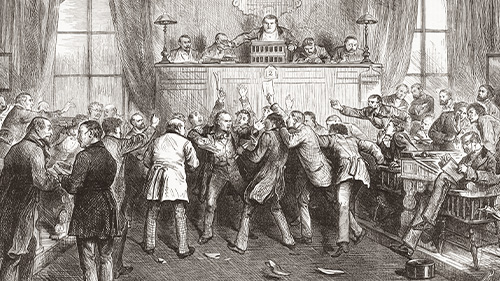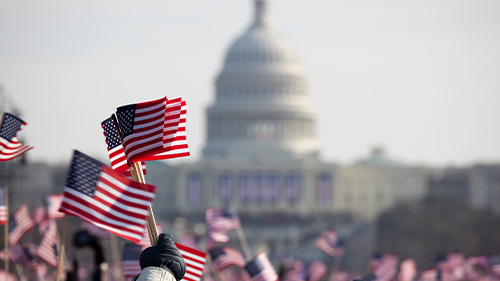APUSH Exam Prep: Reviewing Key Concepts & Dates
Do you need ideas or extra support helping students review for the AP® United States History Exam? Join me as I share my content review resources and...
AP & Honors Mathematics
Explore Wiley titles to support both AP and Honors mathematics instruction.
Literacy Skills & Intensive Reading
Connections: Reading – Grades 6–12
Empower student success with a proven intensive reading program that develops strong reading skills in striving readers.
Drama, Speech & Debate
Basic Drama Projects 10th Edition
Build students’ confidence and competence with comprehensive, project-based theatre instruction.
Literature
Connections: Literature
Support learners as they study dynamic, relevant texts and bring the richness of diverse voices to students through literature.
Literature & Thought
Develop critical thinking, reading, and writing across literacy themes, genres, historical eras, and current events.
Language Arts
Vocabu-Lit® – Grades 6–12
Help students build word power using high-quality contemporary and classic literature, nonfiction, essays, and more.
Connections: Writing & Language
Help students develop grammar, usage, mechanics, vocabulary, spelling, and writing and editing skills.
Reading/English Language Arts
Measuring Up to the English Language Arts Standards
Incorporate standards-driven teaching strategies to complement your ELA curriculum.
English Language Learners
Measuring Up for English Language Learners
Incorporate research-based best practices for ELLs with an approach that includes a focus on language acquisition strategies.
Mathematics
Measuring Up to the Mathematics Standards
Incorporate standards-driven teaching strategies to complement your mathematics curriculum.
Foundations
Measuring Up Foundations
Help students master foundational math skills that are critical for students to find academic success.
Science
Measuring Up to the Next Generation Science Standards
Give students comprehensive NGSS coverage while targeting instruction and providing rigorous standards practice.
Assessment
Measuring Up Live
Deliver innovative assessment and practice technology designed to offer data-driven instructional support.
For a better website experience, please confirm you are in:

The Supreme Court question on the AP Government exam, a mandatory component, consistently challenges students to demonstrate a nuanced understanding of judicial processes, precedent, and the Court's role in American politics. Typically structured in three parts, this question demands analytical rigor and concise application of constitutional principles. To effectively tackle this section, students must recognize recurring trends and develop a strategic approach to each component. The 2024 exam question, focusing on Cohen v. California (1971), exemplifies the general structure and demands of this section.
Consider the 2024 exam question:
In 1968 Paul Cohen wore a jacket displaying an obscene anti-war statement while entering a Los Angeles courthouse. Cohen was arrested and charged under a California statute that prohibited “maliciously and willfully disturb[ing] the peace and quiet of any neighborhood or person [by] offensive conduct.” Cohen asserted that he wore the jacket in protest of the Vietnam War. He was convicted in a Los Angeles court and sentenced to 30 days in jail. In the subsequent case Cohen v. California (1971), the Court ruled in a 5–4 decision in favor of Cohen, overturning his conviction. In the majority opinion, Justice John Marshall Harlan rejected the argument that the state could restrict the words on Cohen’s jacket as offensive conduct. Harlan reasoned that “[O]ne man’s vulgarity is another’s lyric,” warning that “government might soon seize upon the censorship of particular words as a convenient guise for banning the expression of unpopular views.
A) Identify the civil liberty that is common to both Schenck v. United States (1919) and Cohen v. California (1971).
B) Explain how the facts in Schenck v. United States and Cohen v. California resulted in different holdings.
C) Explain how the decision in Cohen v. California reflects the democratic ideal of limited government.
Part A consistently requires students to identify a specific constitutional provision or legal principle directly relevant to the presented Supreme Court case and relate it to another case. In this instance, students must recognize the shared civil liberty between Schenck v. United States and Cohen v. California. The trend here focuses on fundamental liberties, such as freedom of speech, due process, or equal protection. For this question, the answer is the First Amendment's freedom of speech. To prepare, students must study landmark cases and their corresponding constitutional foundations. Memorization of key clauses and their application is paramount. A point will be awarded merely for stating the legal principal in the case. No further analysis is needed.
Part B shifts the focus to analyzing the factual differences that led to divergent Supreme Court holdings. This component tests students' ability to understand the nuances of legal reasoning and how specific circumstances affect judicial decisions. The trend here is to ask about the distinctions between cases that appear similar on the surface. In Cohen v. California, students must articulate how the "clear and present danger" standard in Schenck differs from the "offensive conduct" argument in Cohen. In Schenck, the context of wartime and the potential for immediate disruption justified limitations on speech. In Cohen, the Court found that mere offensive language did not pose a direct threat to public order. To prepare, students should practice comparing landmark decisions, focusing on the specific facts that influenced the Court's reasoning. Generally, most accurate facts about the landmark case will meet the muster for earning a point. This section is usually worth two points, thus requiring more detail and explanation than part (a).
Part C explores the intersection of the judiciary with democratic ideals and principles of the American government. This component assesses students' ability to connect judicial decisions to broader political philosophies and understand how the Court's rulings influence the relationship between the government, legislative institutions, or the individual. The trend here is to ask how a ruling impact, or can be used to reinforce, principles like limited government, individual rights, or federalism. In Cohen v. California, students must explain how the decision reflects the ideal of limited government by restricting the state's power to censor expressive conduct. This requires students to think strategically about how the Court's interpretation of the First Amendment protects individual liberties against governmental overreach. To prepare, students should study the role of the judiciary in safeguarding democratic principles. This section, like part (b), is usually worth 1 point, requiring a clear and nuanced position, but less detailed than part (b).
With specific reference to this 2024 question, students should employ specific vocabulary related to the federal judiciary and constitutional law, such as "First Amendment," "freedom of speech," "clear and present danger," "offensive conduct," and "limited government." They should also provide concrete examples to support their claims, demonstrating a thorough understanding of the material. For instance, in part B, students might cite specific passages from the Court's opinions in both cases to illustrate the differences in reasoning. In part C, they might discuss how the ruling reinforces the principle that the government should not suppress unpopular or offensive expressions. For part C, students should use the language of the explicit concept of the political concept or principle that is being assessed, in this case, limited government.

Do you need ideas or extra support helping students review for the AP® United States History Exam? Join me as I share my content review resources and...

Experienced AP World History teacher Dave Drzonek and AP World History Exam table leader Charlie Hart discuss what students did well and what they...

From a practical point of view, argumentation is at the heart of the free response section of the AP exam. This can be particularly difficult with...

It’s the time of year when teachers and students begin their final push towards preparing for the AP Human Geography exam. Teachers and students...

From a practical point of view, argumentation is at the heart of the free response section of the AP exam. This can be particularly difficult with...

The AP® Human Geo test is fast approaching. But don't stress! Author David Palmer offers words of encouragement and advice for seeing your students...

As we get closer to the AP® World History Exam, students will begin to stress about the required essays they will write as part of the exam. The...

This blog entry is designed to provide some hints to help your students improve their writing on the free-response section of the exam. The...

Teaching a young, eager, and naive student how to write a sophisticated DBQ is like teaching a similarly inexperienced athlete how to successfully...

It’s about that time. The Advanced Placement® Government & Politics Exam is around the corner. I’m sharing my top five tips to help you prepare...

You may have heard about the “Irish” Thesis Formula—it is all over the internet. Some teachers like it, others hate it, but whatever you think about...

Review season is upon us. With preparations for upcoming AP exams, finals, and other year-end assessments principals in cognitive science can help...
